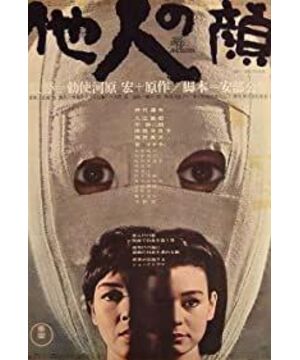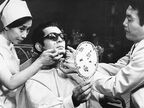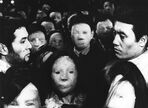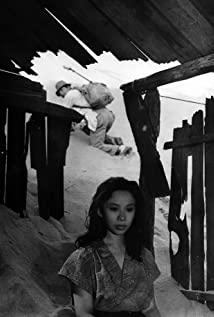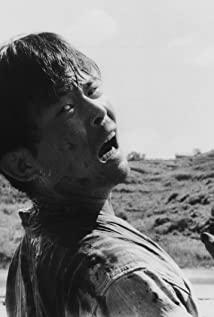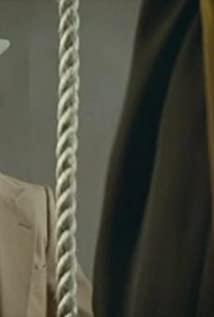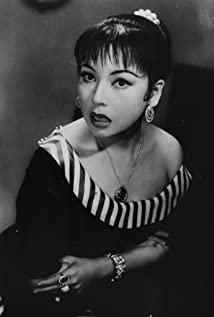"I would like to put out all the lights in the world and goug out everyone's eyes." "How much I want to have an open space around my neck, but my face has become an unavoidable wound in the soul, which in turn corrodes the soul." "In In love, we're trying to take off each other's masks, so I think we should try to put on masks, and what I can't stand is pretending a mask is real." Hiroshi Kawara's "Abe Public House" trilogy The final chapter is full of weird elements and philosophical thinking. After World War II, Japan was still in chaos, with unprecedented destruction of the natural and social environment of the entire country. Those things that symbolized national character before the war were almost completely ignored, and their values and attitudes were suddenly reshaped, in the words of the composer Toru Takemitsu: Because of World War II, there was a period of time when the Japanese hated things about Japan, which affected people and countries. Individuality has never been regarded as a virtue in Japanese culture, and now this traditional concept will be challenged, people will recognize the difference between people, and human relationships will become more alienated and cause general anxiety about their own existence, "Persistent loneliness will become the norm, and we will no longer be ashamed of the modern disease of loneliness." Identity, purpose, and relationship, Edict Kawahara's "The Face of Others" uses key constructs of contemporary life to let the audience face the face of life. Diversity, through his narrative technique, reflects all of this and makes the audience realize that what sometimes seems certain is suddenly transformed into its opposite, a story, a person, a life. It can be said that it is a product of the French New Wave, and the emergence of new concepts is driven by the transformation of film technology. Technically, "The Face of Others" does not seem to follow a coherent structure, but the film's precise control of details allows film production Enriching the film itself, evoking a mixed visual language: the connotations of identities and the tendencies of identities. In order to start telling their stories, I believe it is important to find out the narrators of the stories, and in cinematic terms, we have nowhere to look except The image the lens shows us, looking at the movie and trying to find the camera's point of view, we find that it doesn't have a fixed point of view, the camera should be objective, the character's point of view, the lens or something that's superficial . Through the dynamic perspective of the camera, we begin to believe that we are looking at one thing, only to find out that we are actually looking at something else, which disrupts the viewer's sense of reality. Because it makes it harder for them to believe that anything is deterministic, the most unreliable narrator for them may be the camera itself, and we tend to think that camera opportunities bring absolute certainty. Even narrative space is used as a footnote for this. The character's perspective between the glass panes is sometimes presented by refraction of other objects, sometimes by mirrors, and sometimes blocked by other objects. In fact, the first time the audience saw the protagonist was in the x-ray, and the character kept showing his true feelings in his words, keeping away from us. The camera maintains an unsteady perspective, interfering with the real world and painting a distorted picture. If the protagonist has a double self, then the style of the film must be in a state of constant change. It is impossible to say what we should take this change as. On the contrary, both the film and the narrative structure show the corresponding form. In the narrative structure, the most notable one in "The Face of Others" is the two-line narrative. Similar to "Chongqing Forest" and "Monster Night Panic", "The Face of Others" has two seemingly unrelated plot lines, but the difference here is that we switch back and forth between the two lines, both because of our identity. Not fixed. Not just our characters, but the identity of the film itself, is both familiar and foreign to us as we witness two parallel stories. The whole film is veiled, making the film itself disguise its actual existence. "The Face of Others" does not merely limit our perspective, it also reflects the character of change through a tactile approach. 1. Clinic, laboratory environment. It seems to be infinitely variable, similar to the life of the protagonist, infinitely variable, sometimes open, and instruments, windowpanes, doors seem to fall from the sky. The set is always changing. The film shows the instability of the protagonist and the world at its best, as the protagonist alone resists the anxiety of fitting into a society whose nature is neither uncertain nor providing solutions. The same is true of the spaces where the characters exist. It is because of this method of filming that this film shows how a film can imprint an idea on a character. Movies tell us where to look and who to judge. And in a film where even the camera itself craves identity, anyone can be perceived in any conceivable way. "The Face of Others" deliberately uses disguise to make the film itself appear like a chameleon. Structurally, the film embodies what we think of as real is hidden behind masks. Various scenes replicate each other. Maybe the last scene of the movie activates the perspective, two facts and two identities of the protagonist exist at the same time, the protagonist is always in the center of the shot, everything happens in his background, as if he has nowhere to hide, because the world revolves around him Turning, he put on a bandage, put on a new face, it was just a "catch in the escape". But when the film comes to an end, the protagonist walks into darkness, his wife takes center stage, and she accepts her mask honestly. What ensues is repetitive lyricism, with multiple examples echoing each other, giving us insight into the character's perspective. In this case, the existence of the two roles cannot be denied. When it comes to understanding, that's when the lens comes into play. The exposure of characters to the camera often makes their intimacy apparent to the audience. The Face of Others still uses partitions to block the view, like a character's vision is blocked by a tangled bandage, we can only understand part of the story, we can't touch everything. Like that shutter, blocking the protagonist and the outside world. When they tell us the darkest truth, it's the best way to show its importance, blocking out the other insignificant things. The doctor was initially positioned in the negative space, the edge of the frame, as if surrounded by uncertainty and needed to fill in his own void, but when he started experimenting with the protagonist, they were fixed by the picture, like two extensions of one soul , because the doctor lives indirectly through his own patients, he is addicted to the spiritual world of the protagonist and does not need to compromise with himself. What we find in The Face of Others is primarily a depiction of alienation in contemporary society. From the beginning of the film, we are greeted by a mob of strange, nameless, faceless thugs, and slowly we move away from them until they turn into a dark gelatinous mass that accompanies the This kind of loneliness, in the end, is the concept of separation. Separation, like narrative techniques and content that were supposed to be tightly bound together became disjointed, and once separated from their roots, they needed to be rebuilt. For our characters, the loss of identity means rediscovering ourselves and finding the causality of what we were born to be. Separation makes cinematic techniques infinite potential precisely because in their stories they have to rediscover themselves. Techniques are used in provoking and disrupting, just as cinema is an art form that reflects life, she will give back what you gave him. In "The Face of Others," we see freeze-frame images that seem inconsequential, the massive panning in the room is dramatically amplified, precisely because it's looking for meaning. The lack of the face of the protagonist is just a representation, the loneliness embodied by the character can only be emphasized through the peeping of the camera, and when you are looking for a target, the camera is also looking for that target. In "The Face of Others", we see a completely independent individual, because the identity belongs only to oneself. Movies don't have clear answers, what you give him is what he gives you, if you're lost, the movie may be lost, but it's by your side. It explores the philosophical questions of existence and identity, and also reveals the ruins of the Japanese mind after the war. Disfigurement and masks are good symbols of the destruction and reconstruction of Japanese self-esteem. This philosophical question about "who am I" is very scary to think about. "Masks" can destroy human morality, but when he is alone, he still can't achieve a level-headed posture, and he lives in a more barren desert. After all, Okuyama's mood cannot be transcended and refined in a purer tolerance. The fragility and whistling of emotions always reach the end in the shadow of the sun, and there is no absolute cry and struggle, which is particularly evident in this film. The mask is not scary, the scary thing is that some people take it for real; it is not scary to enjoy the teasing game, the scary thing is the difference in the understanding of sex between men and women; the experiment is not scary, the scary thing is that it imposes personal will on it, and it will return after not following the routine. The tragedy of "killed" was not predicted; the best state was actually "madly" playing the "yo-yo" of life. Taking the mask as the theme, people can't help but think of the national quintessence of Japan - Noh drama, "How much I want to have an open space around my neck, but my face has become an unavoidable window to the soul, which in turn corrodes the soul", you can It is said that the director is discussing a very philosophical level, and this kind of thinking has been sublimated at the climax at the end of the film, the absurdity and tragedy of existence, whether you put on a ponytail, reveal your broken face and step into the sea, or wear a mask and walk towards Real evil, human nature is just a tragedy. The most ironic is the side story where the elder brother kisses the scar of the younger sister,
View more about The Face of Another reviews


